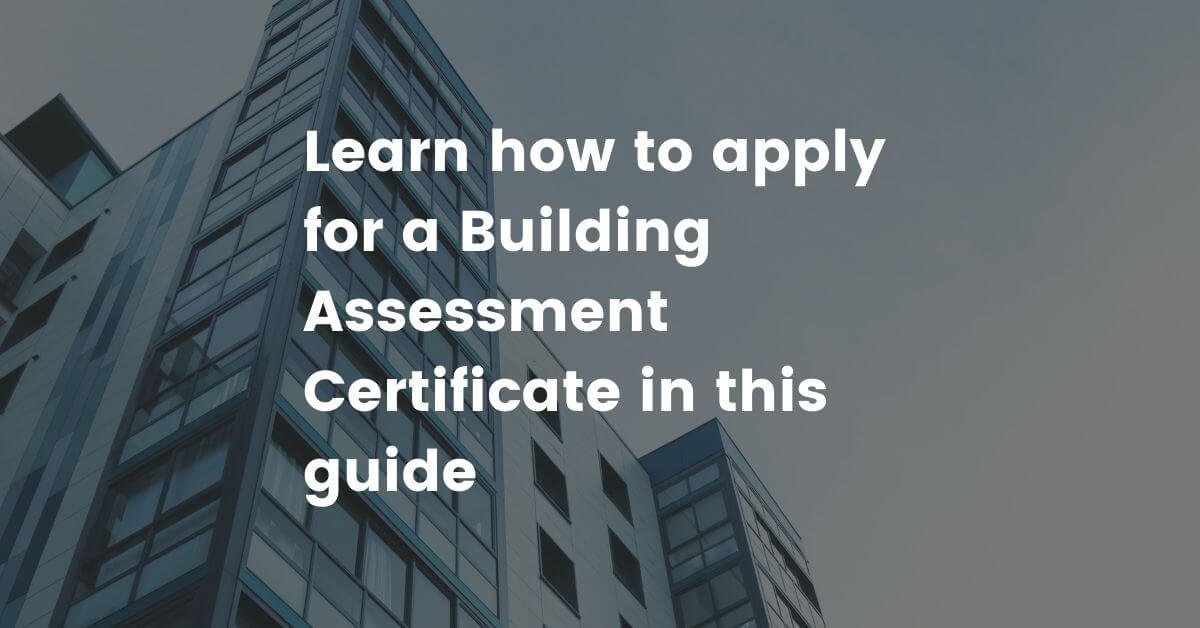Designed as a response to the Grenfell Tower tragedy, Dame Judith Hackitt’s Independent Review of Building Regulations and Fire Safety marked a new era in the safety standards that high-rise residential (HRRBs) buildings need to comply with.
The Building Safety Bill - which encapsulates the safety requirements and measures highlighted in the above-mentioned Independent Review - was published in July 2020 and it is on the road to becoming law in 2022.
The new Safety Bill for high-rise residential buildings outlines an upgraded and stringent regulatory regime, which also requires every building to apply for a Building Assessment Certificate.
The certificate is designed to be evidence for residents that the building meets all the highest safety standards set by the Building Safety Regulator and Safety Bill.
With over 12,500 high-rise and high-risk residential buildings just in England, the new Safety Bill and related Building Assessment Certificate have the aim to prevent any future catastrophic accidents due to fires or structural failures.
Learn how to apply for your building’s certification in this guide by Ark.
What is a Building Assessment Certificate for High-Rise Buildings?
Building Assessment Certificates are a crucial tool in executing the new regulatory regime highlighted by the new Building Safety Bill.
The regime aims to put into practice new safety measures to increase high-rise buildings’ fire safety and reduce the risk of structural failures.
The buildings within the scope of this new regime are those that are:
- At least 18 metres in height
- Have at least 7 stories
- Occupied
- Contain at least two residential units
After a building is registered, the Building Safety Regulator will ensure that the building’s Accountable Persons and Safety Managers are managing the risks relevant to that building and are working to keep all residents safe.
The Building Safety Regulator will regularly carry out assessments and, if all standards are met, they will provide a Building Assessment Certificate. The certificate aims to highlight the building’s performance and show that the Accountable Persons are correctly managing the residential building. The certificate must be displayed in an area where it can be immediately visible by residents and visitors.
Applying for a Building Assessment Certificate: An Overview
When the Building Safety Bill will come into law in and around 2022, all eligible high-rise residential buildings will need to register and apply for a Building Assessment Certificate.
Here is how to prepare for this safety upgrade.
Appointing an Accountable Person
The first step is to appoint a Accountable Person. This step is essential because if your high-rise residential building is eligible for a Certificate, the appointed Accountable Person will be responsible for registering your building with the Regulator and applying for a certificate.
The Accountable Person is responsible for the building’s safety management under the new Bill.
Some of their statutory duties will include:
- Ongoing assessments of the building safety
- Taking responsible steps to prevent and limit the consequences of a major accident
- Designing a Safe Case Regime and producing a Safety Case Report
- Submitting building information with the Regulator
- Registering the building for assessments
Register your Building and Submit Key Information
Once an Accountable Person has been appointed, they will be responsible for submitting all relevant information about the building and completing its registration in the national register of high-rise, high-risk residential buildings.
To do so, the Accountable Person will need to submit a range of information to the Building Safety Regulator, including:
- Safety Case Regime and Report
- Hazard and Major Incident Prevention Plan
- Fire Risk Assessment
- Mandatory Occurrence Reporting System
- Residents’ Engagement Strategy
- Address, height, and number of residential units
- Details about the Accountable Person
While occupied buildings should register within the 6-month transaction period, new buildings will need to do so once they become occupied.
Apply For A Building Assessment Certificate
The regulator will review all information submitted and assess how the Accountable Persons are managing the risk of fire and structural failure in order to keep all residents safe.
If all the standards are upheld, the regulator will issue a Building Assessment Certificate.
If these safety standards aren’t met, the Regulator will advise the Accountable Person regarding the steps that need to be taken.
The certificate will then be awarded once action has been taken and risk points have been resolved.
The Regulator is responsible for notifying the Accountable Person when the application for a certificate is due.
After receiving this notice, the Accountable Person will have 28 days to submit an application and pay the regulator fees.
How Regular Are Building Assessments?
With over 12,500 eligible buildings across England needing assessment, it is estimated that Regulators will take around 5 years to assess them all and release appropriate certificates after the Bill becomes law.
Because of this, new builds will need to register and apply for a certificate once they become occupied.
Instead, already occupied buildings will be subdivided into multiple tranches, depending on their level of risk.
After the initial assessment and certification, Accountable Persons will need to apply for a review every five years.
However, depending on criteria still in development, some buildings will be reassessed earlier than the 5-year mark.
Preparing for Your Building Assessment Certificate Application
While the new Safety Bill is yet to become law, it is never too early to start preparing your Accountable Persons for the certificate application.
If you are unsure where to start, consider .




Leave Comment